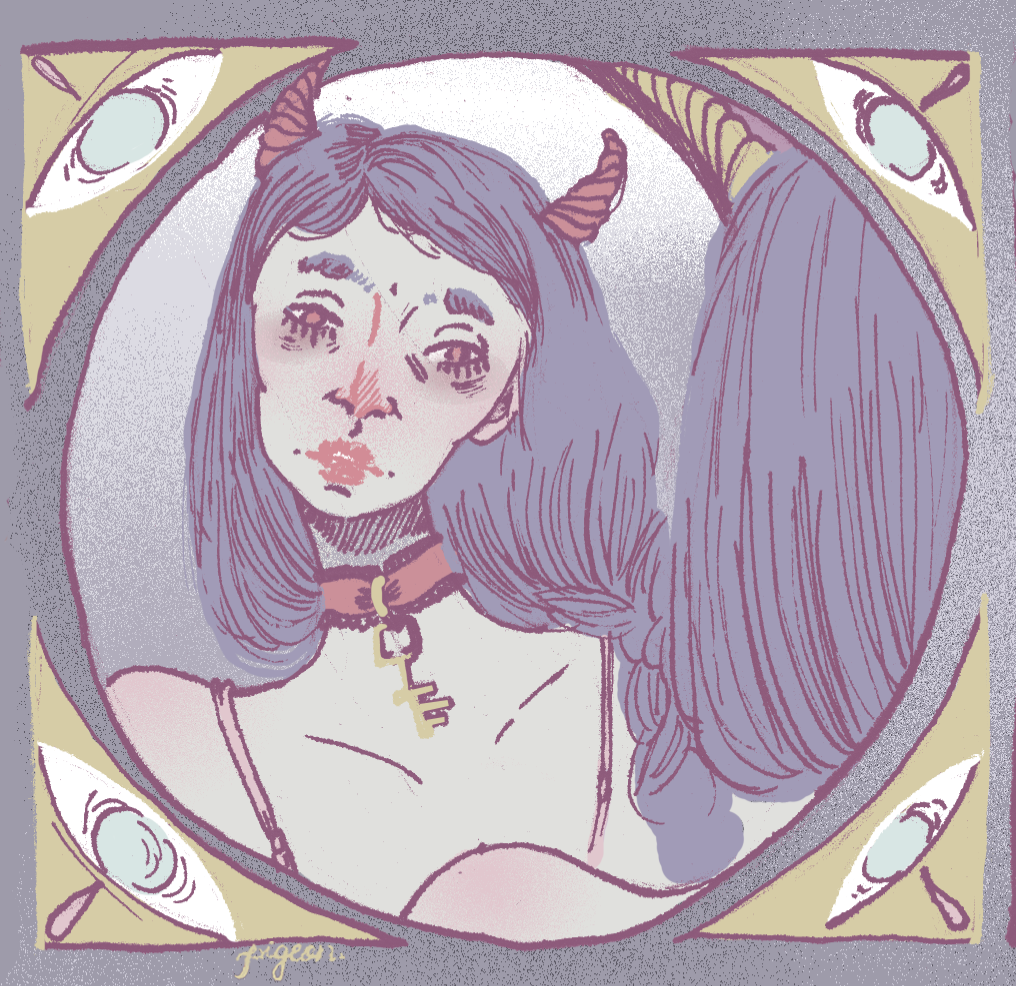On the first day I bled in the Finnish woods, I made dolls of the birch twigs I’d dried above the bedroom furnace, wrapping them in yarn. Whether to cross, or wrap, or tie, and whether to cut. A figure slowly emerges in a dress every time. They don’t have faces like Sonya’s dolls. They don’t have faces or eyes or shoes, just wooden splays where I snapped their limbs in two. Barely standing and yet arms raised as if rejoicing, I can almost hear the music they dance to. My hands moved from strings to other strings and I wrote my first song in years, once again immersed in landscape and some twinge of heartache. Thought of calling my family for days but never ready; even with all my questions, I must prepare myself for the inevitable elaborate lies, the fictions of my ancestry. How to weave this together without becoming undone I wonder before I begin to bleed.
It’s true that I grabbed the red thread and yarn days ago with some vague purpose, and it’s true that my first unravelling of the spool, my first wrapping, was red. I sat in front of Ulla Jokisala’s “Learn How to Stand on Your Own Two Feet” and her book splayed open in my lap, the photographs woven with red thread, sometimes letters and sometimes spilling from houses. The process of understanding our lives, or creating, or both.
❧
It’s true that the other day I lost myself in research on the life of Mother Cabrini, a saint, and upon writing down her name, a small bird flew into my window. I rose from my chair to look and there were more birds — in fact, the only birds I had seen from the window yet. “Villagers and members of the family recalled later that just before her birth, a flock of white doves circled around high above the house, and one of them dropped down to nestle in the vines that covered the walls. The father took the bird, showed it to his children, then released it to fly away. [1]”
It’s true that after founding her first orphanage in New York, Mother Cabrini was broke and held needlework classes to earn extra money, as she was well-versed in embroidery. The night of the first blood, I closed the shades as I always did, and when I awoke, opened them again. It’s true that on this morning, to the left of the dolls on the windowsill was a long, loose piece of white yarn. A yarn I hadn’t cut. A yarn I hadn’t used.
❧
Minerva came to me on the cusp of the new moon in Scorpio, wrapped in black, tied with knots and loose threads. The most frustrating doll to make, I found I suddenly could not remember how to tie the branches together, and I was my most anxious then, at approximately 6:00 p.m., right at the onset of the Dark Moon. My scorpion stung me unexpectedly, and while he had not intended it, I felt the sting for hours, blind to his many messages, him trying to reach me until he was asleep. Our time is almost a day apart now and my night is his day; his day is my dark.
I’ve since learned Minerva is untimely, unseasonable. That she is associated with agriculture, particularly the olive tree, and according to fable was overcome by Neptune, the planet that rules the fish in my sun. That she made a name for Athens and was an incarnation of the Greek goddess Athena.
“Arachne, vain-glorious of her ingenuity, challenges Minerva to a contest of skill in her art. The Goddess accepts the challenge and, being enraged to see herself outdone, strikes her rival with her shuttle; upon which, Arachne, in her distress, hangs herself. Minerva, touched with compassion, transforms her into a spider. [2]”
❧
I’ve also since learned that Minerva was the Roman goddess of wisdom, but she was also a patroness of art, music, poetry, weaving, and craft-making, among many other things. She was a warfare strategist who burst from the head of Jupiter, already clad in full armor, and is often depicted with an owl; sometimes, a snake. The owl who can pierce through darkness and intellect—I think of the Ace of Swords rising, penetrating clouds. The Romans believed the owl to be the harbinger of death.
The birds return whenever I’m writing. “The owl of Minerva takes its flight only when the shades of night are gathering. [3]”
Endnotes
1) Vann, Father Joseph. Lives of Saints with Excerpts from Their Writings.
2) Ovid, “Book the Sixth” of “Fable I,” Metamorphosis.
3) G.W.F. Hegel, Philosophy of Right (1820), “Preface”; trans. S.W. Dyde, 1896.
Hannah Kezema is an artist who works across mediums. She is the author of the chapbook, three (2017, Tea and Tattered Pages), and her work appears or is forthcoming from Black Sun Lit, Full Stop, Spiral Orb, Emergency Index, Gesture, and other places. She was the 2018 Arteles Resident of the Enter Text program in Haukijärvi, Finland, where she worked on her manuscript, A Diviner’s Notebook, which investigates ancestral absences, divinatory praxis, and female occult figures. Along with Angel Dominguez, she co-founded the performance art collaborative DREAM TIGERS in 2014, which experiments with time, process, and hybrid modes.


